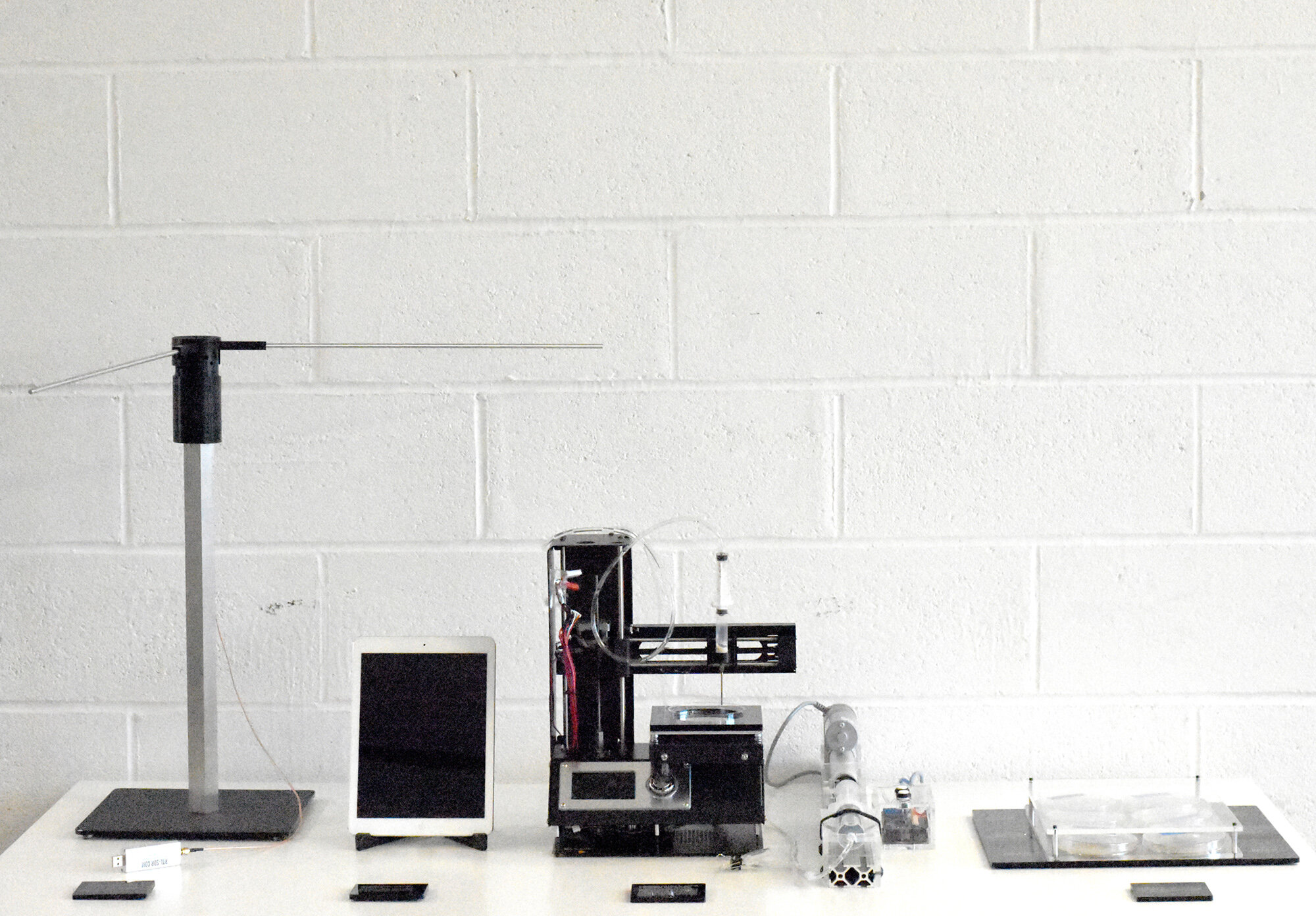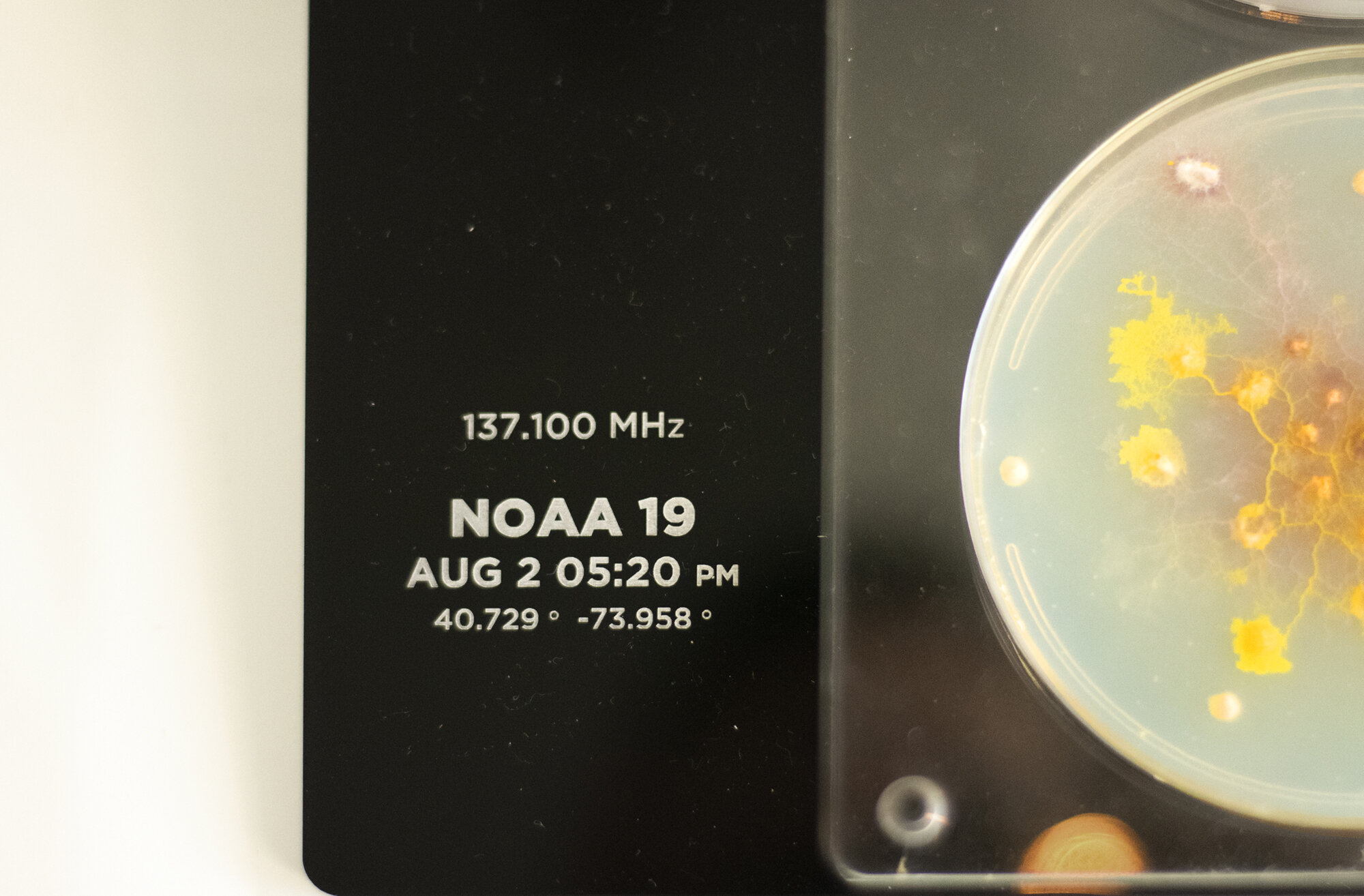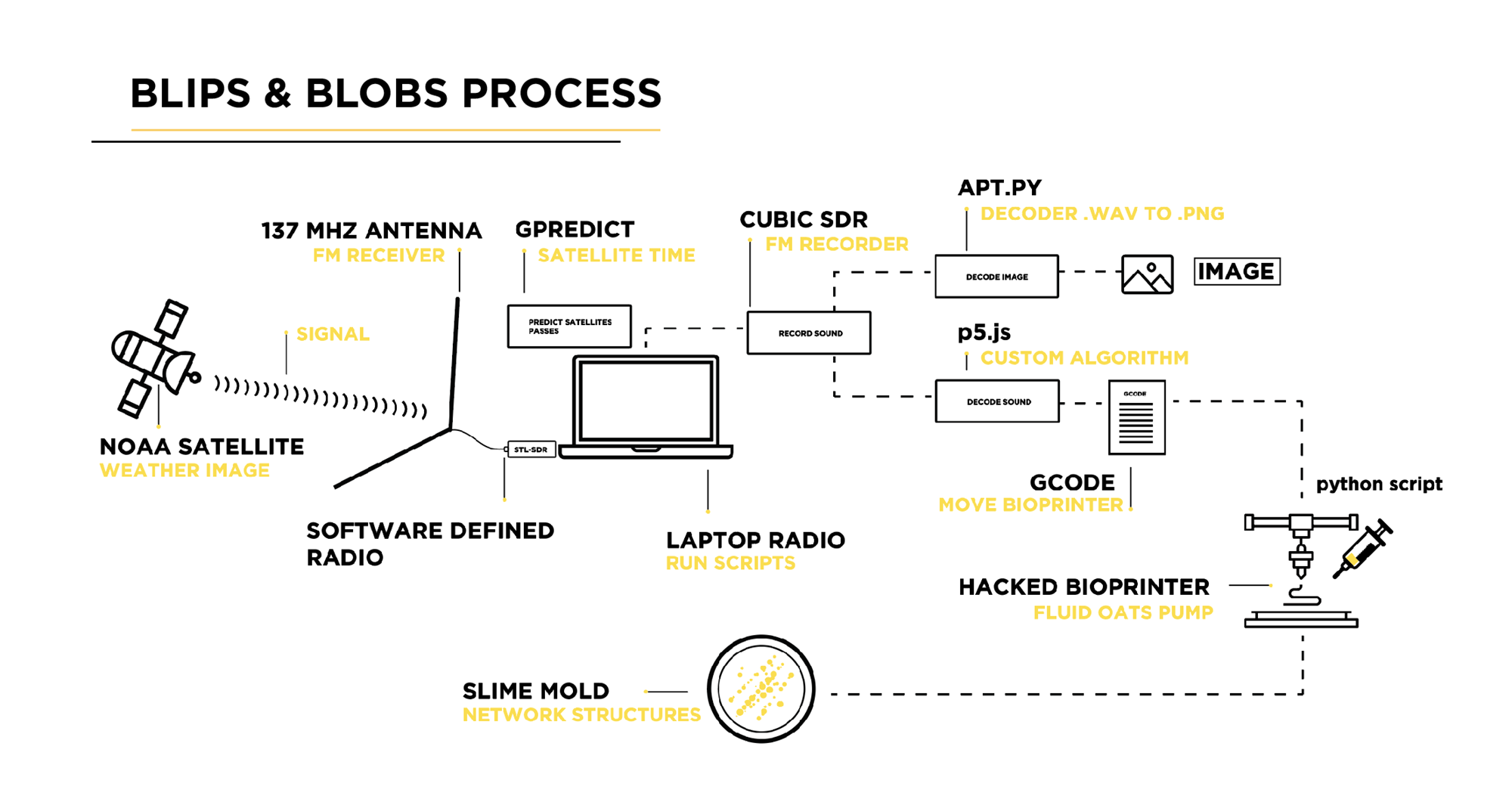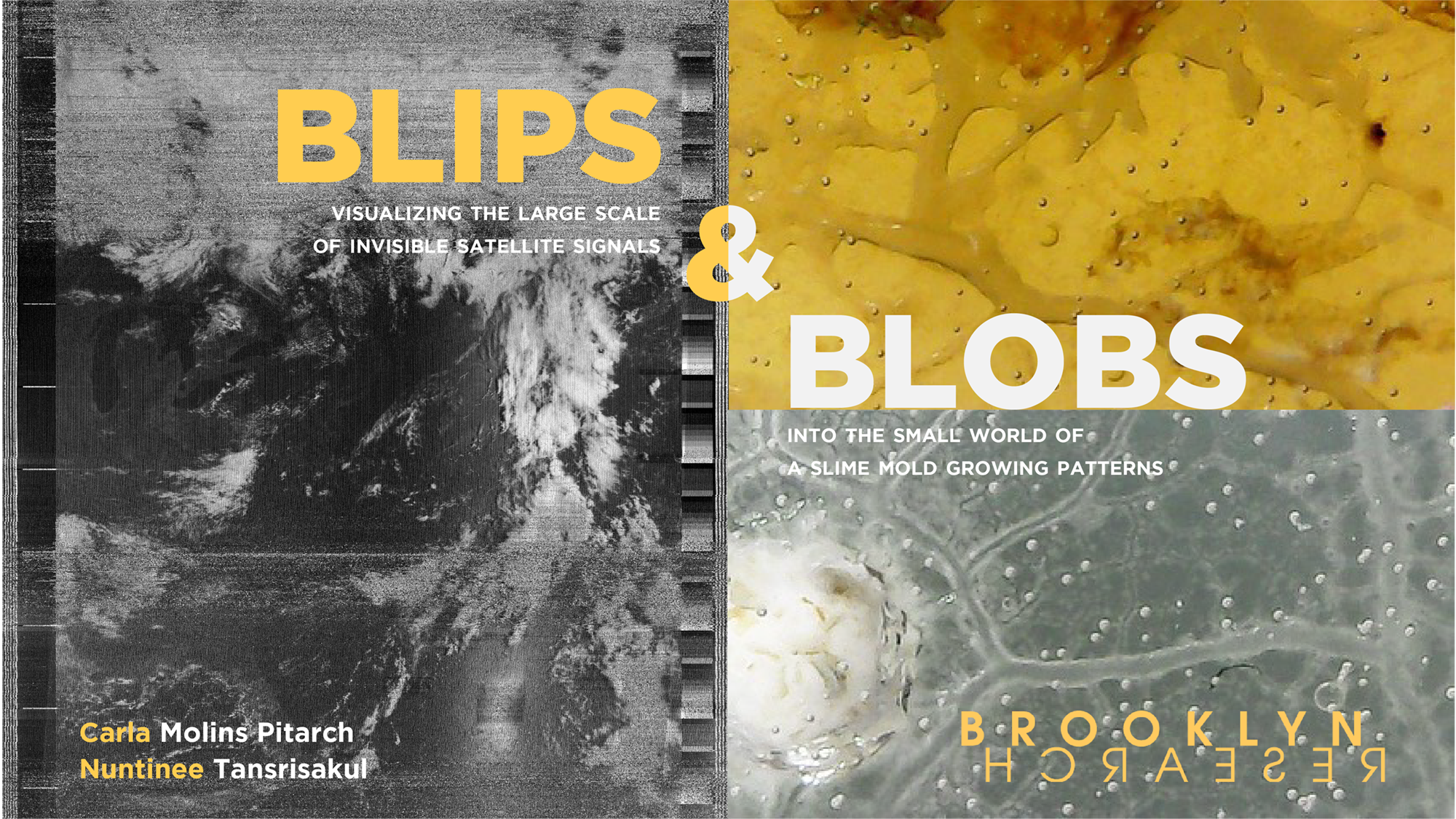
BLIPS & BLOBS
Data Visualization project by Carla Molins Pitarch and Nuntinee Tansrisakul.
What if invisible electromagnetic signals could control the growth of slime molds? What if the network existed as a consequence of decoding messages coming from outer space? How would the signal affect the growth of this organism?
A lot of important and fascinating data around us today is being created, transferred, and synthesized for us without us noticing. What we perceive is merely a peek into this data-dense world.
Blips and Blobs offers the possibility to visualize different patterns of slime growth by decoding signals captured from NOAA satellites.
Those signals will provide different data points on each connection to generate unique multicellular structures. The project aims to highlight the vast range of data and bring to light the non-perceivable nature of data around us by combining satellite data (large-scale/human-made) and slime mold growing process (small-scale/natural) into one system.
FROM SATELLITE TO PETRI DISH
The system is compounded by a 137 MHz custom-made antenna connected to an SDR to capture the signal and record it to be processed. The message is then decoded using an algorithm designed to transform each signal into G-code coordinates that will control a hacked 3d-printer. The bio-printer will provide "Food" to the slime to generate different growth patterns.
BIOPRINTER (HACKED 3D PRINTER + HYDRAULIC PUMP SYSTEM)
The 3d printer is hacked and turned into a bioprinter in order to pump oat paste as food for the slime molds. A python script is used to manage the complex pipeline line where the G-Code, the Arduino and the hydraulic pump work together simultaneously through serial communication to visualize the data on the petri dishes.
Blips& Blobs was developed at Brooklyn Research during a research fellowship (Summer 2019).
REFERENCES:
Antenna - www.afroditipsarra.com; www.dl.acm.org
Hacked 3d printed to pump fluid (oats paste) instead of plastic
Modified from instructables
Carla Molins Pitarch
Carla Molins Pitarch is a creative technologist and educator working in the intersection of art, technology, and biology to bring a tangible instance to complex scientific concepts. At this moment, my domains are molecular and cell biology, thanks to my participation at a European research project called ChromDesign. Currently, Marie Curie fellow researcher at ELISAVA (ChromDesign project), Barcelona School of Design & Engineering; doctoral researcher (GRECC & OCC) in science communication at Pompeu Fabra University (Spain); Design & Technology MFA '19 Parsons, The New School (USA).
Nuntinee is an artist with a background in consumer research and management consulting. Her artistic focus is in the ambiguity between perception and cognition. She uses computational techniques to create algorithmic compositions, time-based visuals, live performance scores and photographic prints. Her work has been showcased at NYC Media Lab, New Inc., CultureHub, Battery Dance Festival, Processing Foundation Conference, Cycling ‘74 Expo and Movement Research.
Contact info
Carla Molins Pitarch :
Nuntinee Tansrisakul:






